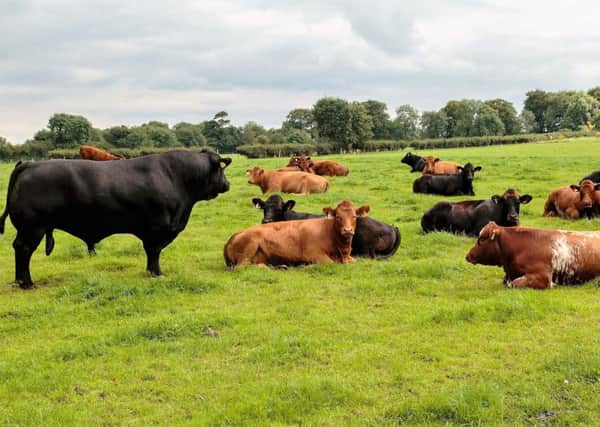DAERA Notes: Beef and sheep


Parasite control and maximising grass dry matter intakes are key in driving lamb performance at grass. It is possible to achieve target daily live weight gains of 280-300 g per day for twin lambs on the ewe where grassland management is high. As daily gains decrease to 180-200 g per day post-weaning at 14 weeks of age it is important to target high grass quality pre-weaning to improve feed efficiency. It is vital to have a parasite control plan in place over the grazing season. Use an appropriate product to which there is no resistance built up on farm. Faecal samples can be taken and analysed to identify anthelmintic resistance. Where resistance to a particular active ingredient is identified a product containing an alternative ingredient must be used.
Nematodiris
May is the month often associated with the start of the Nematodiris threat. The disease, caused by the Nematodiris battus worm, can result in high levels of mortality and stunted growth. It has a different life cycle to other sheep worms. The development of the infective larvae takes place within the egg and infection passes from one year’s lamb crop to the next. Lambs are most susceptible after six weeks of age when dependency on the ewe’s milk reduces and the intake of grazed grass increases. Younger lambs suckling ewes with poorer milk yields are also susceptible. As cold weather delays hatching a sudden increase in temperature can trigger a mass hatch. If this coincides with the period of increased grass intake consequences can be severe. The risk can be reduced by grazing ground which wasn’t grazed by lambs the previous spring. SCOPs, an industry led initiative, which promotes best practice in the control of parasites, provides a live Nematodiris forecast. This predicts hatch date based on temperature data from across the United Kingdom and can be used, along with your sheep grazing history, to identify risk periods on your farm. This can be accessed at: www.scops.org.uk. Provided there isn’t a resistance issue on farm, a white drench (Group 1- Benzimidazoles) will control Nematodiris.
GRASSLAND MANAGEMENT
Maintain grass quality to maximise performance
Advertisement
Advertisement
The grazing season provides an opportunity for inexpensive weight gain from grazed grass. Maximise yield and quality to maximise animal performance. Peak grass growth occurs in the May-June period. Good grassland management is vital to ensure grass covers are grazed down tight to avoid a build-up of dead material at the base of the sward. Monitor the grazed area and be prepared to ‘pull out’ paddocks where covers are strong. If cutting is delayed on these paddocks to increase yield, it may lead to grass shortage later.
BEEF
Breeding season in spring calving suckler cows
As the calving season ends for spring calving suckler herds attention switches to the breeding season. Target body condition score of 2.5+ and a rising plane of nutrition to achieve a calving interval of 365 days. Replacement heifers should be bred two to three weeks before the main herd. Where a stock bull is used, record heats observed and monitor repeat heats to identify infertility or sub-fertility. Sub-fertility is now recognised as an issue and although a bull may be fertile at the start of the season he may experience periods of sub-fertility.
Where artificial insemination (AI) is used heat detection can often be the primary barrier to success. Cows and replacement heifers need to be observed two to three times daily. If this is not practical there are options available which may increase heat detection rate. The most successful is the use of a vasectomised bull fitted with a chin-ball harness. This contains a type of paint, clearly marking any cows in standing heat. As the vasectomy needs to be carried out at least six weeks before the bull is used, this rules out this option, if not already carried out. Tail paints and scratch card/ink-well based patches are another option, however the success of these varies from farm to farm. Where heat detection is a problem and labour availability is limited, a synchronisation programme using fixed-time AI may be considered in consultation with your vet. Research at AFBI has shown a large variation in conception rate to synchronisation on farms. The key to success is having cows in optimum body condition score and adhering strictly to the recommended timing of AI in the particular programme protocol.